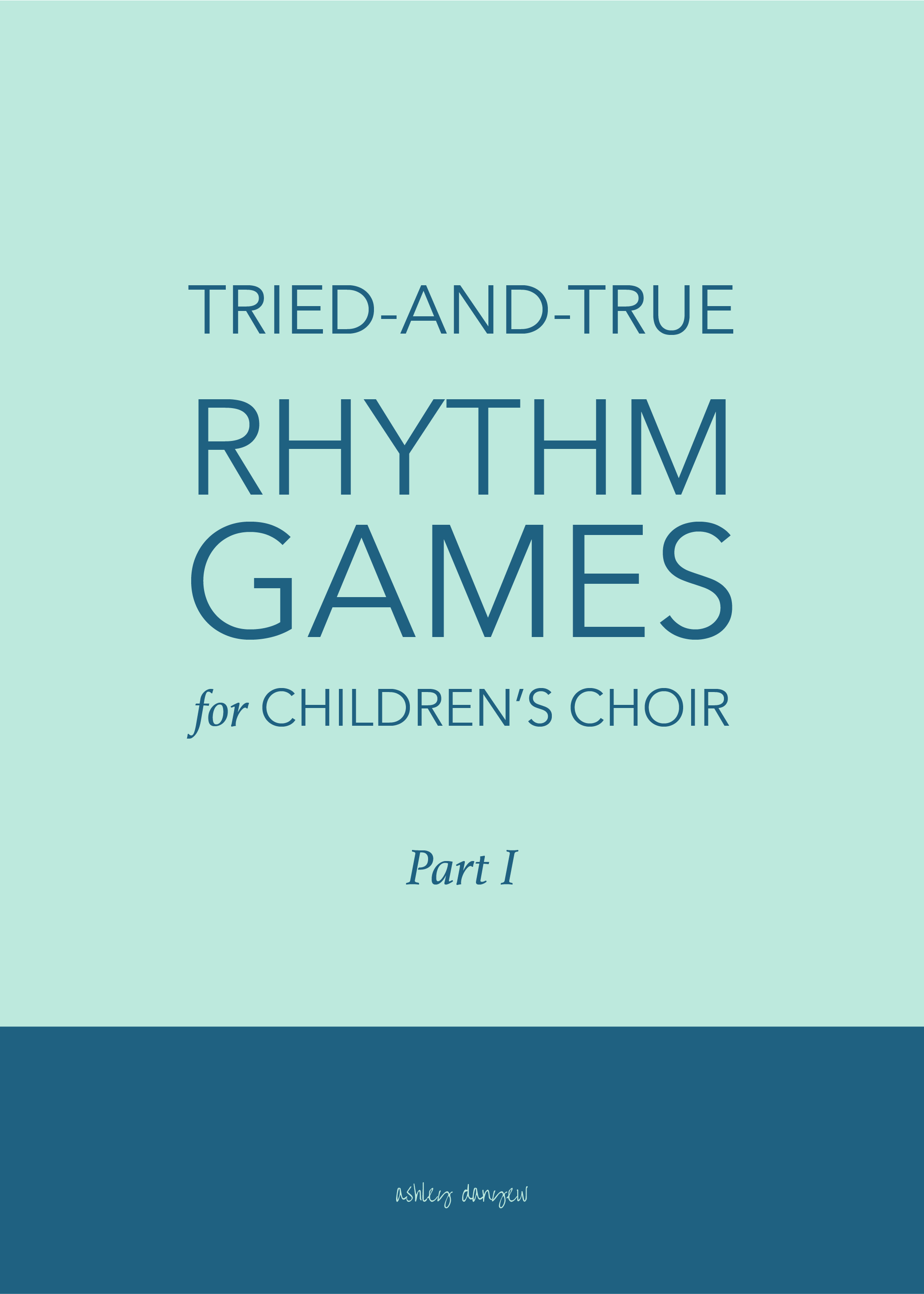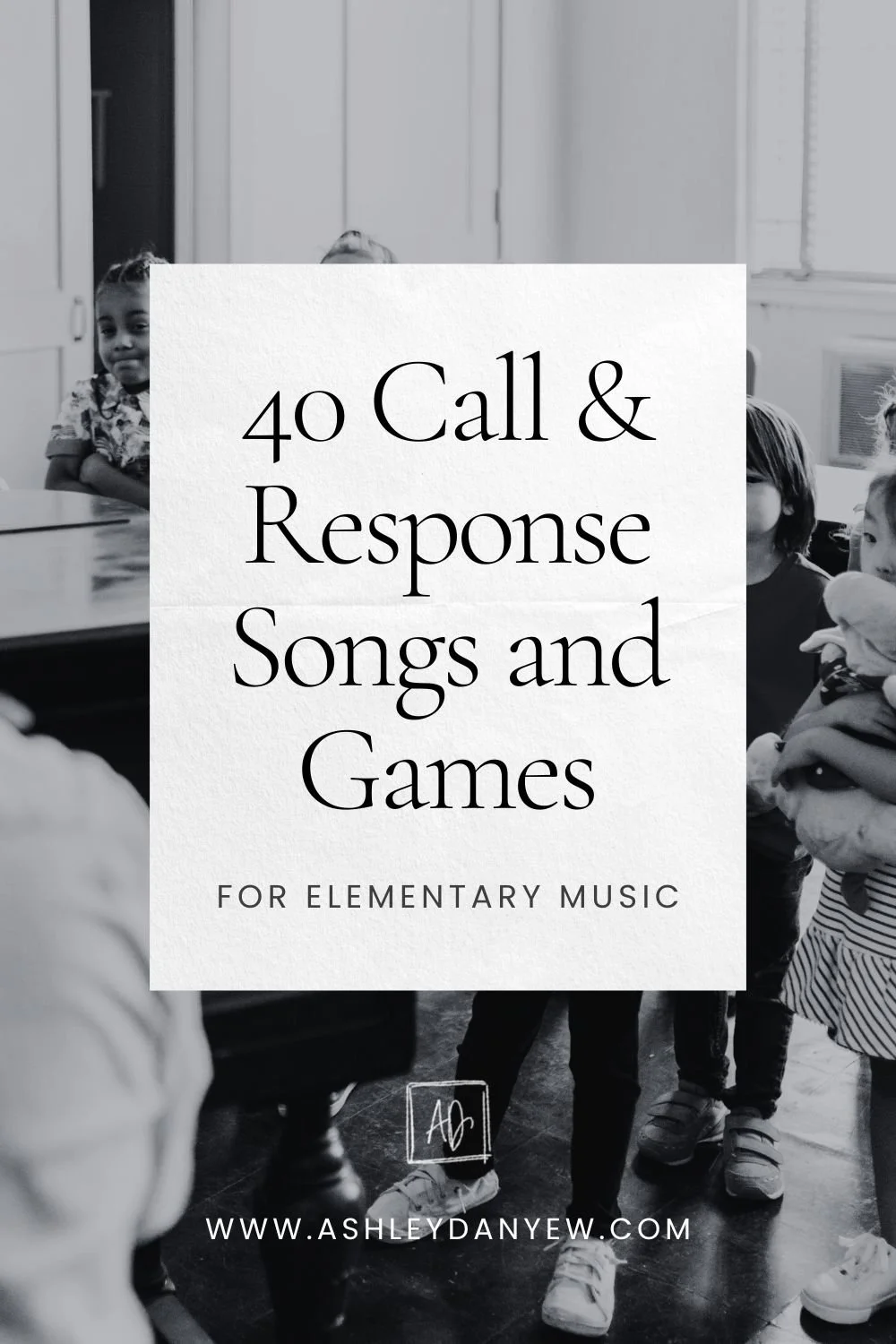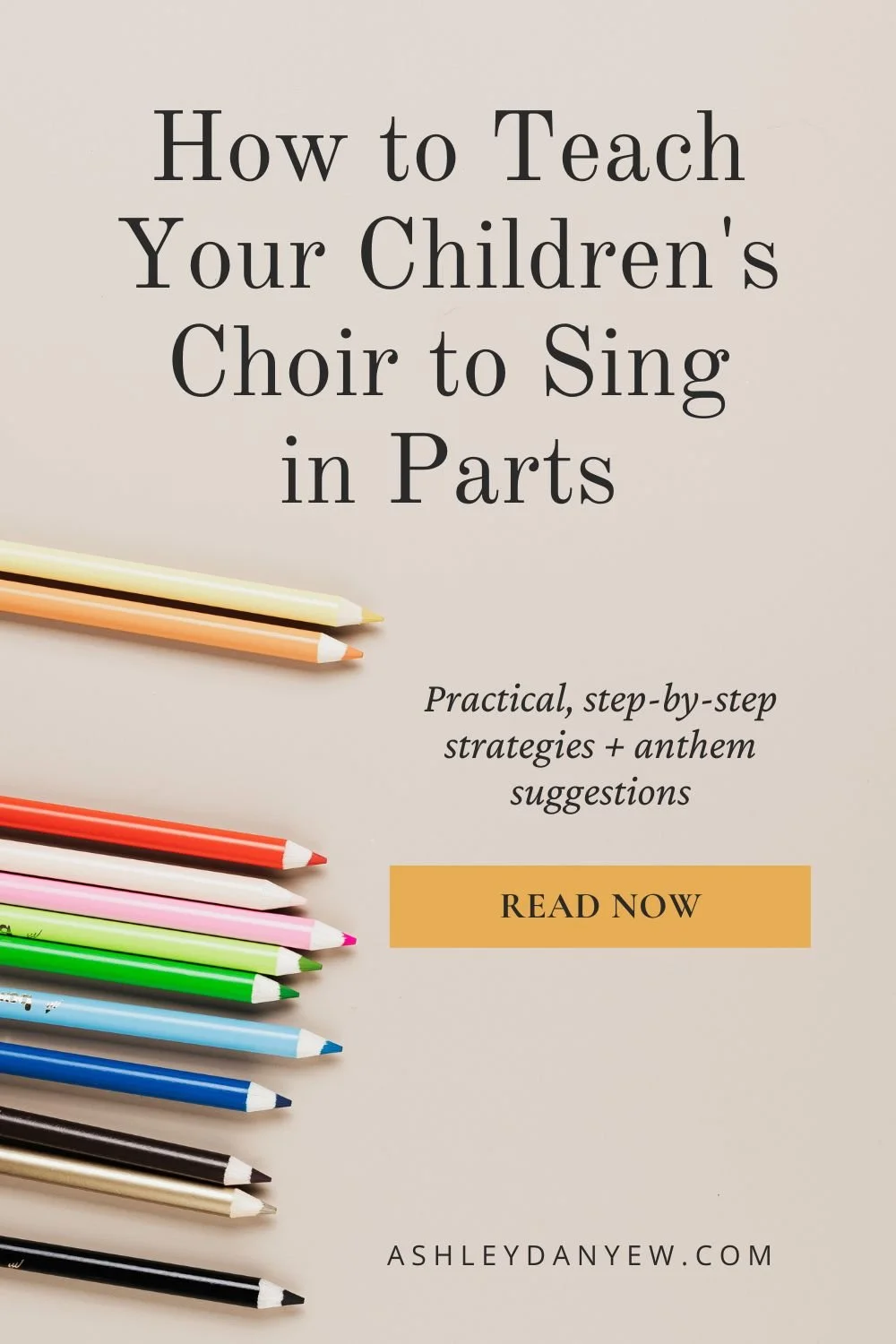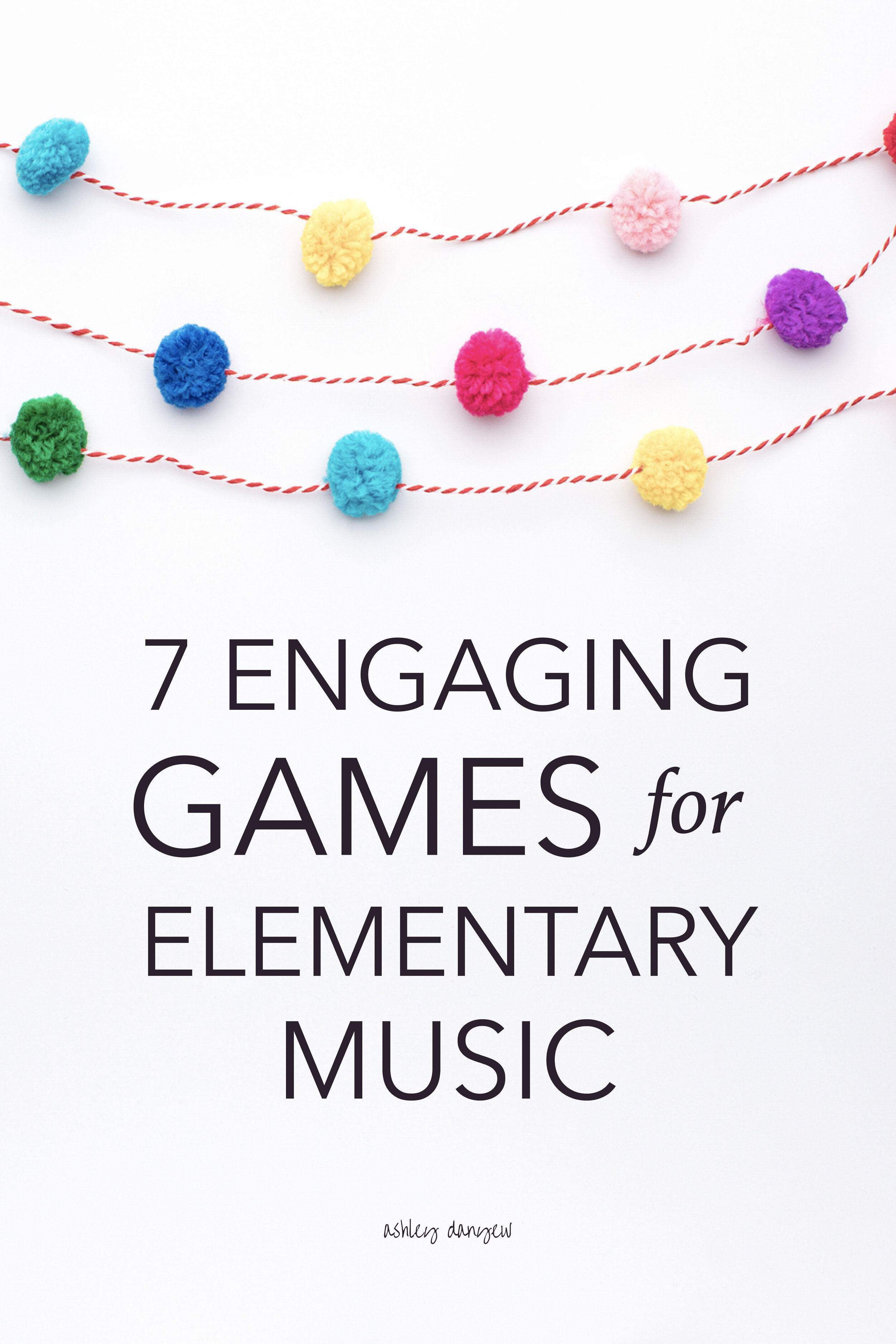Rhythm is a vital component of music.
A strong rhythmic foundation is arguably the most important facet of music. Without a rhythmic framework in place, music lacks structure and a solid foundation.
With my piano students, I often start with rhythm when learning a new piece. We tap and count out loud, chant the words in rhythm, step the rhythm, keep a steady beat and chant the rhythm, and point to the notes in the music and count out loud.
I believe this focus on rhythm is equally important in choral settings.
There are lots of ways to practice rhythm and help develop an internal sense of steady beat in your rehearsals.
The easiest (and perhaps most effective) is to turn it into a game.
Children love games and giving them an active way to participate and experience the new concept will make it both memorable and fun.
This week, I'm sharing my favorite tried-and-true rhythm games and activities for children's choir.
Part I includes activities for keeping the steady beat, moving, listening, improvising, and developing aural skills.
Part II will include games that focus on rhythmic reading, pattern recognition, composition, and developing musical independence.
A Quick Note of Clarification
I use the terms "beat" and "rhythm" quite a bit in these two posts. What's the difference?
Beat is the steady underlying pulse of the music (like your heartbeat).
Rhythm is the changing durations of notes that are played or sung. (source)
Here are a few fun, engaging games and activities that prepare, introduce, and reinforce rhythmic concepts:
Tried-and-True Rhythm Games
Click, Stomp, Slap, Clap
This rhythmic chant includes the words of the corresponding movement (click, stomp, slap, clap), each falling on a different beat within the bar. See a video demonstration here. After the chant is familiar, try having children do only the movement, without the words. This is a great way to develop an internal sense of the beat and musical independence.
Body Percussion
Everyone can be their own one-man band with this fun activity. Starting with your head, demonstrate a motion (bobbing up and down) and sound effect ("boing!"). Add body parts with corresponding motions and sounds until you've reached your feet (seven sounds total). (source)
Take it to the next level by using body percussion to accompany a piece of music. For instance, if the piece is in 4/4, with 4-bar phrases, you might do a sequence of four motions/sound effects, four beats each. Try doing them out of order or backwards (feet up to head) for a little extra fun!
Name Game
This is a great activity for the beginning of the choir year as everyone is getting to know each other. Have everyone sit in a circle and tap on their knees: tap-tap-rest-rest. One at a time, have children say their names (in rhythm, if possible) in the two beats of rest (e.g. tap-tap-Ash-ley). Add one measure in between each child so it's not too rushed.
Mix it up by going around the circle and having children name their favorite color, animal, or flavor of ice cream!
Rhythm Machine
A great way to reinforce steady beat and musical independence, and give children an opportunity to improvise.
Divide children into groups of 6-8 and have them sit in a circle. Invite each child to create a 4-beat pattern (clap and chant) to repeat over and over again, adding one new pattern at a time until everyone is clapping and chanting their pattern simultaneously. Then, try having children drop out until only one remains. (source)
For older choirs, divide children into groups of four and have them stand in a circle. Invite each child to create a 4-beat pattern with corresponding body motion and sound effect (e.g. stomp-stomp-clap up high, "boom-boom-tongue click"). Layer the patterns on top of each, as before, or string them together in a sequence, one at a time.
Keep the Beat
For young singers in particular, it seems we can never do enough steady beat activities. Use bean bags, balloons, or even tennis balls to help children keep a steady beat (and get out some extra energy!) while listening to a piece of music. Bounce the ball to the beat (if your choir room has a hard floor), pass the bean bag around the circle or toss to a partner, or keep a balloon up in the air.
Secret Pattern (like Simon Says)
Choose a simple 3- or 4-beat rhythm pattern. Chant it for the group and tell them this is a secret pattern. When they hear it, they should not echo back. Chant a series of other patterns and have children echo you. Throw in the secret pattern and see if you catch someone! If no one echoes the secret pattern, the children get one point. If someone starts to echo the secret pattern, you get a point. (source)
Cup Game
I've shared this game before (in this post), but it's a great way to reinforce steady beat, subdivision, and musical independence, so I thought I'd mention it again!
Here's how it works:
Set a red solo cup upside down in front of each child.
Beats 1-4: Clap two times. Hit the bottom of the cup three times (right-left-right).
Beats 5-8: Clap once. Pick up the cup and set it down.
Beats 9-12: Clap once. Pick up the cup with your left hand. Hit the top of the cup with your right hand. Hit the bottom edge of the cup onto the table or floor.
Beats 13-16: Switch the cup to your right hand. Tap the table or floor with your left hand. Set the cup down in front of the person on your right. Repeat. (source)
Working with younger children? Here’s a simplified version.
Once your choir knows the sequence, try pairing it with a piece of music that gradually speeds up (like Grieg’s “In the Hall of the Great Mountain King” or Tchaikovsky’s “Russian Dance” from The Nutcracker Suite).
Pass a Pattern (like telephone)
Have everyone sit in a circle. Have a child choose a rhythm pattern card from the stack and "pass" the rhythm pattern around the circle by whispering it to their neighbor. (source)
Where’s the Beat?
This is a fun listening activity for reinforcing steady beat and preparing the concept of subdivision.
From the author: "We listen to anything from a piece that they are about to play, to "Happy Birthday," or a Mozart symphony. The object is to find the downbeats (tapped with an exaggerated downward gesture). Once the big beats have been established, we discover the lesser beats by snapping our fingers in an upward direction (3/4 becomes Tap, Snap, Snap.) The result is an understanding of meter and full measure counting." (source)
Meet the Rhythm Family
Reinforce steady beat, note values, and subdivision with this active listening game.
Introduce each note value as a member of the Rhythm family (source) and a character in a story you create. Have children step the note values in their feet, moving around the room. Each time they hear a character mentioned in the story, have them change their step to that note value.
Help those you teach learn the language of music.
This printable collection of six rhythm pattern card sets features a total of 192 different patterns made up of quarter notes, half notes, eighth notes, sixteenth notes, and quarter rests in duple and triple meters (32 cards/set).
Check back on Wednesday for Part II!
P.S. You might also like these posts:
15 Singing Games for Children's Choir
7 Fun Games for Children's Choir
Clap Your Hands: 16 Clapping Games for Children's Choir
Fun, Easy Gathering Activities for Children's Choir







































